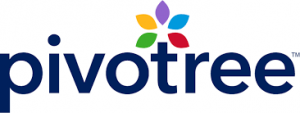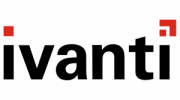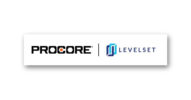The Undisclosed Secrets of Hiring Heroes
12 Things That Great Hiring Managers Know That Make Businesses Thrive
Management Professor Peter Cappelli of Wharton claims that “Businesses have never done as much hiring as they do today. They’ve never spent as much money doing it. And have never done a worse job of it.” But how can that be? Aren’t the old adages of ‘practice makes perfect’ and ‘quantity produces quality’ true in hiring? Perhaps not.
The fact is that recruiting and hiring talented people for your organization has never been more complicated, costly, time-consuming or important for your business’s success. Employee job satisfaction, organizational performance, profitability, marketability, and growth are all the result of sound recruitment strategy and great hiring practice.
But hiring is more difficult than ever, and the impact of both good and bad hires has never been bigger. According to a Glassdoor study of 84,000 interviews in 25 countries, the average length of the hiring process took roughly 24 days in the US, while jobs in Energy, Utilities, Tech and Defense are likely upwards of a month.
Making matters worse, and putting greater pressure on the Human Resource Departments, Internal Recruiters and Hiring Managers responsible for getting hiring right is the fact that, “Hiring talent remains the number one concern of CEOs in the most recent Conference Board Annual Survey and is the top concern of the entire executive suite”, according to a Harvard Business Review report.
Add in the fact that statistics presented by Leadership IQ show that the Overall Failure Rate for new hires within the first 18 months is 46%, and the cost of each new hire comes in at a US average $4,425 per job according to the Society of Human Resource Management, with that number being excessively higher for managerial roles.
Also, it costs one-third of an employee’s annual salary to hire someone to replace them based on a 2017 Employee Benefit News report, making the replacement cost of an employee earning a median salary of $45,000 a year a staggering $15,000. Steven King, the president and CEO at GrowthForce adds that “external hires demand 18-20% more in salaries”, according to a Forbes report. Add in the time spent by HR teams developing recruitment campaigns, job descriptions, interviewing, onboarding, etc, and it’s no wonder why CEOs feel the way they do.
Employee retention is bad. The cost of new hires is continually rising, while hidden costs—such as wasted time, lower morale and decreasing job satisfaction—is skyrocketing.
So how do you turn the tide on bad hires?
WHAT THE HEROES OF HIRING KNOW
Recruiting Talent is Proactive
Great Hiring Managers and HR departments know it is crucial for an organization to focus their effort on developing a strong talent pipeline, says Arte Nathan, the 25 year Chief Human Resource Officer for Wynn Resorts. The lookout for top talent is an ongoing and forward thinking process. Projecting turnover, proactively recruiting, and scouring the market continually are key elements for saving time and money in hiring.
Every New Hire is an Opportunity
Every time a position at your organization becomes available, it reveals an opportunity to improve and strengthen the organization. According to Joel Graybeal and Andrew Kratz, per Entrepreneur, the managing partners at the Triangle Rock Club, a company should “never make a compromise hire. You are better off waiting for the right person than settling for a less than ideal candidate. You can’t get best in class with a mediocre employee.”
Determine the Desired Goals and Outcomes of the Hire
Companies that take the time to outline clearly the demands and responsibilities that need to be met by prospective candidates—not just in terms of experience, and through the interview process, but what it will take to be successful in the role at the company—pays huge dividends according to Paul Huffman, CEO of TalentHunt. When candidates know exactly what it will take to succeed, and are clear on performance expectations and demands in advance, they are far more likely to meet those expectations and keep their role far beyond average retention rates for new hires.
Pair Rational Thought with Intuition
According to David Nason, CEO of Hirebrain, a company can increase job retention, save significantly on hiring cost, and improve the overall recruiting and interviewing experience by engaging in a systematic approach to hiring—one that leverages both the advantages of an analytical process that accounts for the unwanted and harmful cognitive biases that can cause undue influence during the hiring process and that also makes use of valuable intuitive elements that come from professional experience. Taking part in a process that is fair, objective, and enjoyable provides a massive competitive advantage for companies in terms of both talent attraction and retention.
Listen, Really Listen
John Rampton, of the Entrepreneur Leadership Network, suggests the one key element of the talent recruitment and hiring process that is often overlooked is that of the recruiters’ or interviewers’ ability to listen. Rampton suggests that “being a strong listener will show your interest in the candidate and encourage them to speak… it’ll help you get the best person available and keep them long term.” Listening well, in combination with other elements of recruitment, helps recruiters and Hiring Managers to develop deeper and more meaningful connections with prospective candidates. These connections end up paying long-term dividends in terms of establishing trust, loyalty and supportive professional relationships that millennial candidates look for and value.
Add Work Simulation and Problem Solving to the Hiring Process
Famously noted for saying, “How do you hire a chef? Have them cook you a meal.” John Sullivan, author of 1000 Ways to Recruit Top Talent and professor of management at San Francisco State University, suggests that if you want to get hiring right, you need to see your prospective talent in action. This can be done in the interview or recruiting process by providing an actual problem or obstacle that candidates might face during their prospective role at your organization and have them outline the steps they would use to resolve the issue. Simulations like this offer insight to both the Hiring Manager and job applicant by eliminating any potential ambiguity about the role itself, the skills and attitudes required to succeed in it, and whether there is a good match between the demands of the role and the talents, skills and experience.
Balance Cultural Fit with Diversity of Thinking and Experience
“Culture Fit” has become a hot button topic among those in the talent acquisition space but according to Claudio Fernandez Araoz, author of It’s Not the How or the What but the Who: Succeed by Surrounding Yourself with the Best, when recruiting, companies must think about how diversity and their specific organizational needs can be met before beginning a recruiting campaign or talent search. Too often, with reactive hiring, ‘fit’ becomes ‘more of the same type’ of employee. Great Hiring Managers, however, understand that diversity is a measure of the various ways an employee can contribute diverse perspectives, insights, and thinking methodologies. Certainly you want to know if a new hire will adapt comfortably to your organization, but you also want to find out what they can uniquely contribute and ways they will add value to your company.
Knowing Your Management Style
A big reason for employee turnover is a difficult relationship with the new manager. To retain the top talent that an organization has invested so much time and capital in acquiring only to have the effort undone because of a poor managerial fit is something that can be easily remedied. Self aware managers are empowered managers. According to Bryan Kramer, a Forbes Council Member and Business Performance Coach. Managers that understand their management style—its benefits and shortcomings—allow recruiters and hiring managers to find talent that can grow and achieve excellent results under such leadership.
Use the Right Tools
The market for recruitment and assessment tools is making the talent acquisition process both more efficient and more complicated. Great Hiring Managers are in touch with the dynamics and needs of their organization and utilize the right tools to assist them in optimizing the search, assessment and training process for new recruits. A LinkedIn report notes that talent acquisition professionals are noticing that the traditional interviews tend to reinforce bias and are unreliable in terms of skill assessment. They are looking for support in the hiring and recruitment process more than ever. Partnering with a great recruitment company allows HR directors to save time, money and improve the talent search process significantly through relying on the expertise, market awareness, talent pools and industry knowledge that professional recruiters possess. Combine this with the myriad of online assessment tools available, hiring support technologies and web-based pre employment testing platforms and hiring can become a much more rewarding process for both the organization and the applicants.
Get Support
Outsourcing the talent acquisition process can be a complicated issue for internal recruiting and HR departments, but what recruitment support offers, according to a Business News report, goes beyond being an ‘in the know’ operative, connecting talent with prospective employers. Supportive recruitment firms have the advantage of strong networks, a deep understanding of the prospective talent pools and the skills to market opportunities that attract ‘high caliber’ talent instead of leaving organizations to settle for ‘good enough’ candidates—especially when hiring under urgent conditions. The strength of an organization lies in its ability to recruit and retain high performing individuals. This process starts by getting the support and skills needed to make those great hiring outcomes possible.
Know Why They Are Leaving
According to Danny Nelms, president of Work Institute, “Employers are missing the mark on improving retention for two main reasons… First, employers are not taking steps to understand their unique workforce; and second, they are not using exit interview methodologies that are dependable in revealing the real reasons employees leave.” Couple this with increasing competition for workers and a seemingly diminishing talent pool, and this leads to a job market advantage for prospective employees that is costing employers thousands of dollars per employee in turnover. Data from a Work Institute Retention Report on a study investigating over 34,000 exit interviews reveals that the top reasons people are leaving their job include: career development (22%), work-life balance (12%), management behavior (11%), compensation and benefits (9%) and well-being (9%).
Understand the Importance of Hiring on a Business’s Performance
Hiring better people leads to organizations that perform better. This seemingly obvious fact is often overlooked by Hiring Managers when vacancies arise. The pressure from managers to fill positions quickly—along with a lack of time, resources, market expertise, poor branding, marketing and hiring strategies—leaves organizations wanting. The fact is, there is a significant performance gap between top and adequate performers. High-performing teams and individuals have up to 8 times the productivity and execution of average performers. This is especially significant in technical roles and the impact is substantial. Those who hire exceptionally understand the long-term costs of poor hires and make a priority of eliminating these issues during the recruiting and hiring process.
Those Who Hire are the Heroes of Successful Organizations
The Heroes of every influential organization are the people that recruit, acquire, and retain the talented individuals and teams that will move the company forward successfully—those who execute on goals and objectives and raise the job satisfaction of everyone involved. When forward-thinking Hiring Managers bring in the right people—who fit together in a way that elevates the skills, assets, productivity and creativity of those around them—companies thrive. This process begins at the very beginning of recruiting and hiring campaigns and considers the 12 things that hiring managers know that make businesses great.












